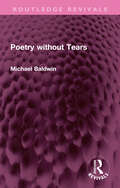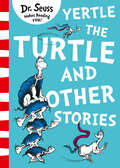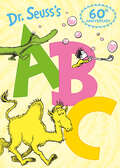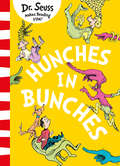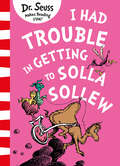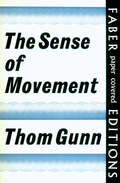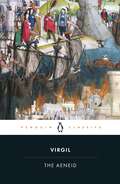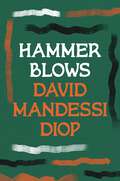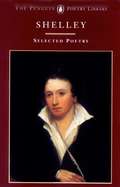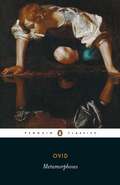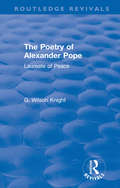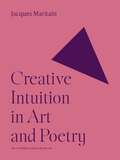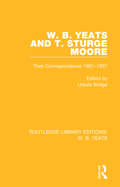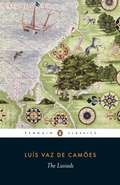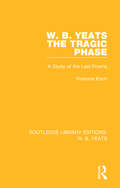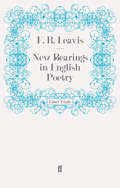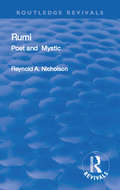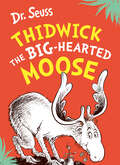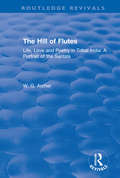- Table View
- List View
Poetry without Tears (Routledge Revivals)
by Michael BaldwinFirst published in 1959, Poetry without Tears is a book not about what poetry is. The author argues that this book is not concerned with the educational resurrection of a dead art but about the artistic resurrection of education. Poetry is a force released in activity. That is how an educationalist and a poet see it. It is rarely how critics and academics see it. They see it as a series of poems, correspondingly it is as a ‘Collection of Poems’ that it is taught. Basic educational truths are frequently overlooked in our teaching of the arts, and no art suffers more from this than poetry. Baldwin goes on to say that in the end teaching is a creative activity and the creators are the best teachers. This book is a must read for students of both literature and education.
Poetry without Tears (Routledge Revivals)
by Michael BaldwinFirst published in 1959, Poetry without Tears is a book not about what poetry is. The author argues that this book is not concerned with the educational resurrection of a dead art but about the artistic resurrection of education. Poetry is a force released in activity. That is how an educationalist and a poet see it. It is rarely how critics and academics see it. They see it as a series of poems, correspondingly it is as a ‘Collection of Poems’ that it is taught. Basic educational truths are frequently overlooked in our teaching of the arts, and no art suffers more from this than poetry. Baldwin goes on to say that in the end teaching is a creative activity and the creators are the best teachers. This book is a must read for students of both literature and education.
Yertle the Turtle and Other Stories
by Dr. SeussIn this hilarious book, featuring three timeless fables, Dr. Seuss explores the pitfalls of growing too big for your boots!
Dr. Seuss’s ABC
by Dr. SeussFrom Aunt Annie’s alligator to the colourful Zizzer-Zazzer-Zuzz, Dr. Seuss’s delightful book introduces early learners to the letters of the alphabet through an amazing array of crazy creatures. Enjoy this fantastic classic anytime, anywhere. Hilariously read by comic legend, Rik Mayall.
Hunches in Bunches
by Dr. SeussA new paperback edition, never before published in the UK, written and illustrated by the one and only Dr. Seuss.
I Had Trouble in Getting to Solla Sollew
by Dr. SeussAs our hero struggles to reach the city of Solla Sollew, where they never have troubles, at least very few, we realise that it’s better to face up to life’s problems than to try to run away from them!
The Sense of Movement: [poems
by Thom GunnThe Sense of Movement, Thom Gunn's second collection, was first published in 1957.'This book . . . establishes Gunn as one of the few really interesting poets of his generation and promises greatly for the future.' Times Literary Supplement
The Aeneid: Selected And Arranged With Brief Notes (classic Reprint)
by Virgil David WestVirgil's Aeneid, inspired by Homer and inspiration for Dante and Milton, is an immortal poem at the heart of Western life and culture. Virgil took as his hero Aeneas, legendary survivor of the fall of Troy and father of the Roman race, and in telling a story of dispossession and defeat, love and war, he portrayed human life in all its nobility and suffering.
Hammer Blows
by David Mandessi DiopIn this English translation of Hammer Blows, the famous collection of poems by renowned writer David Diop is presented in all its brilliance and wit.First published in 1956, this powerful collection was written during the height of the Negritude movement in France. Posthumously translated into English as Hammer Blows, Diop's voice offers a passionate critique of slavery in the American South and colonialism in Africa.Edited and translated from the French by Simon Mpondo and Frank Jones.'A vigorous use of diction that cuts like a whip, an impassioned and total commitment to the oppressed.' John F. Povey
Selected Poetry: Poems
by Isabel Quigly Percy ShelleySHELLEY'S WORK HAS BEEN CRITICIZED FOR ITS DIDACTICISM AND UNDISCIPLINED EMOTIONALISM. BUT ESSENTIALLY HE WAS A POET OF IDEAS AND IN HIS SEARCH FOR TRUTH AND ORIGINAL HUMAN PERFECTION, SHELLEY WAS INSPIRED AS MUCH BY THE GREEK POETS AND PHILOSOPHERS, PARTICULARLY PLATO, AS BY THE RADICALISM OF HIS OWN AGE. ABOVE ALL, HIS GREAT GIFT WAS HIS LYRICISM AND HIS VERSE COMES AS NEAR TO MUSIC AS POETRY CAN.
Metamorphoses (PDF)
by Mary M. Innes Mary Innes OvidOvid drew on Greek mythology, Latin folklore and legend from ever further afield to create a series of narrative poems, ingeniously linked by the common theme of transformation. Here a chaotic universe is subdued into harmonious order: animals turn to stone; men and women become trees and stars. Ovid himself transformed the art of storytelling, infusing these stories with new life through his subtley, humour and understanding of human nature, and elegantly tailoring tone and pace to fit a variety of subjects. The result is a lasting treasure-house of myth and legend.
Routledge Revivals: Laureate of Peace (Routledge Revivals)
by G. Wilson KnightFirst published in 1955, this exegesis on the writings of Alexander Pope reveals the technical felicities of his poetry, and is the first to be devoted to the great meaning inherent in his work. One section, which has appeared before and did much to redirect the study of Pope, has been thoroughly revised. Of the other four chapters, one offers an original of The Temple of Fame, and, while discussing this neglected poem, makes several suggestions which may be said to constitute a significant advance in aesthetics. Another analyses Byron’s support of Pope, regarding it as a landmark in the history of English literary criticism and as necessary to the understanding of Pope and Byron alike. The last chapter discusses the relation of Pope’s thought to our own time. This book adds much to what is already known of Pope, and will go far in reviving an interest in the work and philosophy of the Laureate of Peace.
Routledge Revivals: Laureate of Peace (Routledge Revivals)
by G. Wilson KnightFirst published in 1955, this exegesis on the writings of Alexander Pope reveals the technical felicities of his poetry, and is the first to be devoted to the great meaning inherent in his work. One section, which has appeared before and did much to redirect the study of Pope, has been thoroughly revised. Of the other four chapters, one offers an original of The Temple of Fame, and, while discussing this neglected poem, makes several suggestions which may be said to constitute a significant advance in aesthetics. Another analyses Byron’s support of Pope, regarding it as a landmark in the history of English literary criticism and as necessary to the understanding of Pope and Byron alike. The last chapter discusses the relation of Pope’s thought to our own time. This book adds much to what is already known of Pope, and will go far in reviving an interest in the work and philosophy of the Laureate of Peace.
Creative Intuition in Art and Poetry (The A. W. Mellon Lectures in the Fine Arts #1)
by Jacques MaritainThe classic work on the sublime interplay between the arts and poeticsThis book explores the rich and complex relationship between art and poetry, shedding invaluable light on what makes each art form unique yet wholly interdependent. Jacques Maritain insists on the part played by the intellect as well as the imagination, showing how poetry has its source in the preconceptual activity of the rational mind. As Maritain argues, intellect is not merely logical and conceptual reason. Rather, it carries on an exceedingly more profound and obscure life, one that is revealed to us as we seek to penetrate the hidden recesses of poetic and artistic activity. Incisive and authoritative, this illuminating book is the product of a lifelong reflection on the meaning of artistic expression in all its varied forms.
W. B. Yeats and T. Sturge Moore: Their Correspondence 1901-1937 (Routledge Library Editions: W. B. Yeats)
by Ursula BridgeThe letters in this book, first published in 1953, throw light on the literary scene at a time in which William Butler Yeats and Thomas Sturge Moore regularly corresponded. In the early days of their friendship Yeats and Sturge Moore often saw each other in London where they both played an active part in the literary and artistic scene. When Yeats later lived chiefly in Ireland and Sturge Moore spent much of his time in the country and abroad they met less often but kept in touch by letter. Many of these letters, and therefore a record of their friendship, has been preserved and presented in this book. This title will be of interest to students of literature and literary history.
W. B. Yeats and T. Sturge Moore: Their Correspondence 1901-1937 (Routledge Library Editions: W. B. Yeats)
by Ursula BridgeThe letters in this book, first published in 1953, throw light on the literary scene at a time in which William Butler Yeats and Thomas Sturge Moore regularly corresponded. In the early days of their friendship Yeats and Sturge Moore often saw each other in London where they both played an active part in the literary and artistic scene. When Yeats later lived chiefly in Ireland and Sturge Moore spent much of his time in the country and abroad they met less often but kept in touch by letter. Many of these letters, and therefore a record of their friendship, has been preserved and presented in this book. This title will be of interest to students of literature and literary history.
The Lusiads
by Luis Vaz de Camões William AtkinsonFirst published in 1572, The Lusiads is one of the greatest epic poems of the Renaissance, immortalizing Portugal's voyages of discovery with an unrivalled freshness of observation. At the centre of The Lusiads is Vasco da Gama's pioneer voyage via southern Africa to India in 1497-98. The first European artist to cross the equator, Camoes's narrative reflects the novelty and fascination of that original encounter with Africa, India and the Far East. The poem's twin symbols are the Cross and the Astrolabe, and its celebration of a turning point in mankind's knowledge of the world unites the old map of the heavens with the newly discovered terrain on earth. Yet it speaks powerfully, too, of the precariousness of power, and of the rise and decline of nationhood, threatened not only from without by enemies, but from within by loss of integrity and vision.
W. B. Yeats: A Study of the Last Poems (Routledge Library Editions: W. B. Yeats)
by Vivienne KochIn this study, first published in 1951, the author examines the poetry of Yeats’s last years, that poetry which reached and held to the ‘intensity’ which he had striven for all his life. Vivienne Koch explores the ways in which the great but troubled poems derive their energy from suffering, and examines thirteen of his last poems in detail, each with a slightly different focus. This title will be of interest to students of literature.
W. B. Yeats: A Study of the Last Poems (Routledge Library Editions: W. B. Yeats)
by Vivienne KochIn this study, first published in 1951, the author examines the poetry of Yeats’s last years, that poetry which reached and held to the ‘intensity’ which he had striven for all his life. Vivienne Koch explores the ways in which the great but troubled poems derive their energy from suffering, and examines thirteen of his last poems in detail, each with a slightly different focus. This title will be of interest to students of literature.
New Bearings in English Poetry
by F. R. LeavisIt is difficult now to imagine the shock that this book caused when it was first published in 1932. The author was a teacher at a Cambridge college, an intensely serious man who had been seriously wounded by poison gas on the Western Front, and he was not disposed to suffer foolishness gladly. His opening sentences were arresting: 'Poetry matters little to the modern world. That is, very little of contemporary intelligence concerns itself with poetry'. What followed was nothing less than the welcoming of a revolution in English verse, set against the moral and social crisis that followed the trauma of the First World War. It was this situation, this feeling of breakdown and disorder, that gave such force to Leavis's dismissal of most late Romantic poetry and his welcoming of the modernists T. S. Eliot and Ezra Pound, and of the writer who Leavis regarded as their forebear, Gerard Manley Hopkins. The tone of high moral urgency, and the message that the experience of literature could become an engagement with life that was almost a secular equivalent to religion, seemed new and abrasively refreshing. Leavis despised the reigning dilettantism in both poetry and criticism, and in this book he threw down the gauntlet to the establishment as he understood it. In the same year he founded the journal Scrutiny, and began his long career as the most formidably serious literary critic of his time.
Revival: Selections from his Writings, Translated from the Persian with Introduction and Notes (Routledge Revivals)
by Maulana Jalāl al-Dīn RūmīTo the English reader the mysticism of Rumi opens a new world of spiritual and poetical experience. "God is One but religions are many" runs the Sufi teaching; and the English reader can here enlarge his experience by apprehending the mystic intuition of a great Persian poet. The late author's beautiful and faithful translations are illuminated by Notes on Sufi doctrine and experience. The author did not finish the Introduction, but it has been completed by his old pupil and friend, Professor A. J. Arberry, who has seen the book through the press.
Revival: Selections from his Writings, Translated from the Persian with Introduction and Notes (Routledge Revivals)
by Maulana Jalāl al-Dīn RūmīTo the English reader the mysticism of Rumi opens a new world of spiritual and poetical experience. "God is One but religions are many" runs the Sufi teaching; and the English reader can here enlarge his experience by apprehending the mystic intuition of a great Persian poet. The late author's beautiful and faithful translations are illuminated by Notes on Sufi doctrine and experience. The author did not finish the Introduction, but it has been completed by his old pupil and friend, Professor A. J. Arberry, who has seen the book through the press.
Thidwick the Big-Hearted Moose
by Dr. SeussA hilarious story about one very big-hearted moose who is only too happy to host a menagerie of animals in his antlers – until his new guests go too far!
The Hill of Flutes: Life, Love and Poetry in Tribal India: A Portrait of the Santals (Routledge Revivals)
by W.G. ArcherOriginally published in 1974, The Hill of Flutes, is a descriptive account of the Santals and their poetry in their heartland of the Santal Parganas. The book explores the Santal world view, including approaches to education, love, sex, and marriage. It describes and discusses Santal dances, festivals and ceremonies, and other key events and gatherings, such as annual hunts. Through the close consideration of song and poetry, The Hills of Flutes offers an engaging insight into life in Santal society.
The Hill of Flutes: Life, Love and Poetry in Tribal India: A Portrait of the Santals (Routledge Revivals)
by W.G. ArcherOriginally published in 1974, The Hill of Flutes, is a descriptive account of the Santals and their poetry in their heartland of the Santal Parganas. The book explores the Santal world view, including approaches to education, love, sex, and marriage. It describes and discusses Santal dances, festivals and ceremonies, and other key events and gatherings, such as annual hunts. Through the close consideration of song and poetry, The Hills of Flutes offers an engaging insight into life in Santal society.
